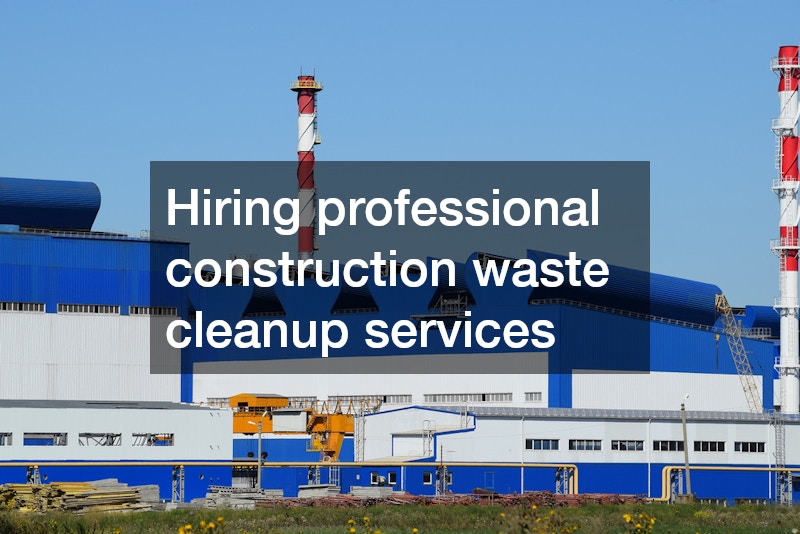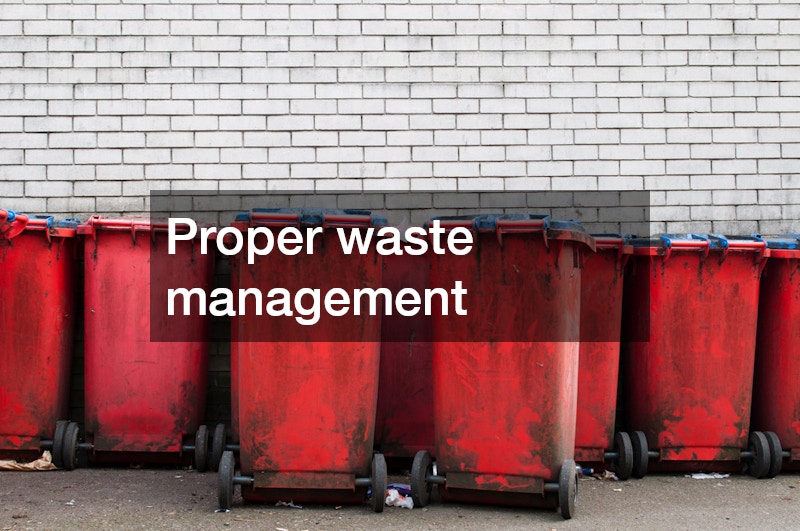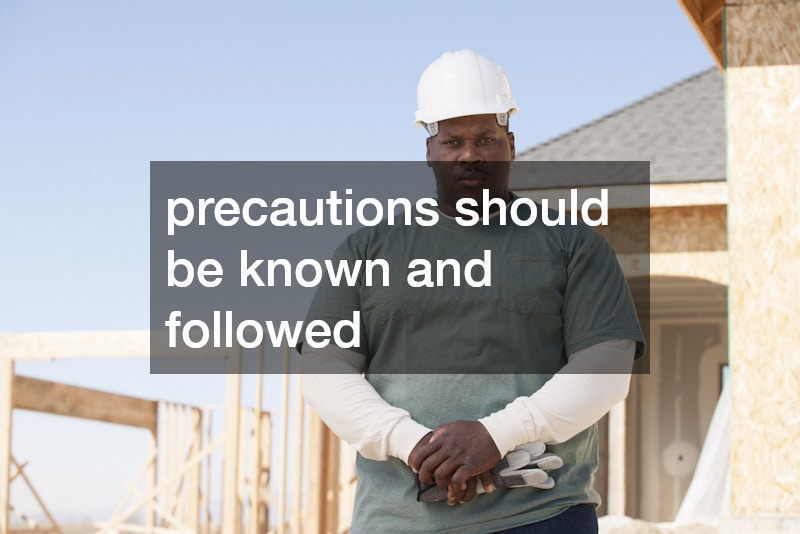
In the busy world of construction, it’s vital to maintain safety and efficiency on-site. A well-organized construction site not only protects the workers but also boosts productivity and ensures compliance with regulations. One key element in improving safety is implementing a strong construction waste management plan. A construction waste management plan should outline how to handle the various types of materials generated during the construction process, ensuring that everything from excess concrete to packaging materials is managed properly. Strategically placed construction site trash containers around the site facilitate easy disposal and help keep the area tidy.

Additionally, hiring professional construction waste cleanup services can greatly simplify the process to dispose of construction debris. These services have the capacity to handle large amounts of waste, ensuring that all materials are disposed of in an environmentally responsible manner. Effective debris cleaning not only enhances the appearance of the site but also reduces potential hazards that could cause accidents. By prioritizing these practices, construction managers can establish a safer and more efficient work environment. This article presents seven essential strategies for maintaining safety and efficiency on construction sites, highlighting the significance of proper waste management and its role in the overall success of a project.


If you run a construction site, you need to always remain vigilant. You have to maintain the site and make sure that it is not only running smoothly, but that everyone is staying as safe as possible. There are many ways to do this, but here is a list of seven ways that you can ensure that the safety of your employees are going just as well as, hopefully, the entire site is.
- Safety Lessons
First, you have to make sure that everyone is as informed and knowledgeable about safety regulations and practices as possible. This goes for both those in command and for the everyday employee. Make sure that those running the day to day of the construction site are trained in how to keep everyone safe. At the same time, make sure that every employee knows how to keep themselves safe and all of the regulations they have to follow. - Proper Equipment
Part of sticking with the regulations means to keep up-to-date equipment that will also keep everyone safe. This counts for things such as eye protection and toe protection. Eye protection is pretty self-explanatory (get some glasses and keep things from flying into your eyes), but its also important to realize the need for toe protection. There’s a reason steel-toed work boots have been around for decades. Toe accidents add to a significant amount of construction site accidents. Get the shoes and you can help prevent one on your site. - Alturnamats Ground Protection Mats
Next look into Ground mats like alturnamats ground protection mats to make sure that your vehicles are running smoothly. These mats help your machines run smoothly by giving them a path to do their work on. They can traverse difficult terrain like muddy grass. Plus, the plastic material can absorb the pressure and shock with much easier grace than other substances like wood or steel. Give alturnamats ground protection mats a try and see. - Wire Pulling Machines
In addition, using wire machines to pull the weight of heavier objects can help prevent the risk of having any construction site accidents. These machines can do most of the heavy lifting. In addition to preventing accidents, the machines can also lead to giving employees more time to work on other tasks and thus make the site more efficient. - Automated Vehicles
Speaking of efficiency due to machinery, there is also the option of automated vehicles. The benefits of having vehicles that drive themselves are the same as with wire pulling machines. These vehicles can carry the burden that employees would have to worry about, and they can leave more time for employees to focus on something else. - Fall protection
That said, there are still many more kinds of accidents that can happen at the job. As such, it is the employers job to supply safeguards to make sure that the employees are protected. Fall protection is one such safeguard. By installing things such as guardrails and safety nets, the employer is making sure that the employees are always safe while at the job. - Follow Safety Measures
All of this is to say that it is best both the employees and the employer follow any kind of safety measures possible. As an authority on the site, you have to make sure that all of the legal precautions are followed. In addition, even if a precaution isn’t enforced by law, its a good practice to follow safety measures anyway. This is for the good of the people working under you. Then, the employees should also be aware of any and all safety measures so that they can keep themselves as safe as possible while working on the site.
Bonus Tip: Construction Dewatering
In construction projects, construction dewatering refers to the process of removing excess water from a site to create a dry and stable foundation. It’s essential to implement proper dewatering solutions to prevent water from compromising excavation and building activities. Common sources of water that need removal include groundwater, surface runoff, or rainwater.
Developing a dewatering plan is crucial before starting construction. The plan outlines how water will be managed throughout the project, detailing specific dewatering methods and systems to be used. Typical methods include sump pumping, wellpoint systems, and deep wells. Each approach depends on factors such as the type of soil, groundwater levels, and the depth of excavation.
A well-designed dewatering system ensures safety, prevents soil erosion, and minimizes delays. Sump pumps are often used for small-scale projects, while larger sites may require complex wellpoint networks or vacuum-assisted systems. Selecting the right dewatering solutions ensures the worksite stays dry, reducing the risk of flooding and structural instability.
Effective dewatering methods not only protect the integrity of the project but also comply with environmental regulations, ensuring that discharged water doesn’t harm nearby ecosystems. A robust dewatering plan ensures smooth construction progress, safety, and efficiency. Start your construction dewatering plan today!

There are many precautions that are out there for anyone working at a construction site. All of these precautions should be known and followed. In addition, buying anyone equipment and machinery that can help keep workers safe, like fall protection or alturnamats ground protection mats, are good investments for the better of the construction site as a whole.
Consider looking into these 7 tips and applying them to your own site. See the difference some automated vehicles or wire machines can make for you, your employees, and the job overall. Find out more at this site.
